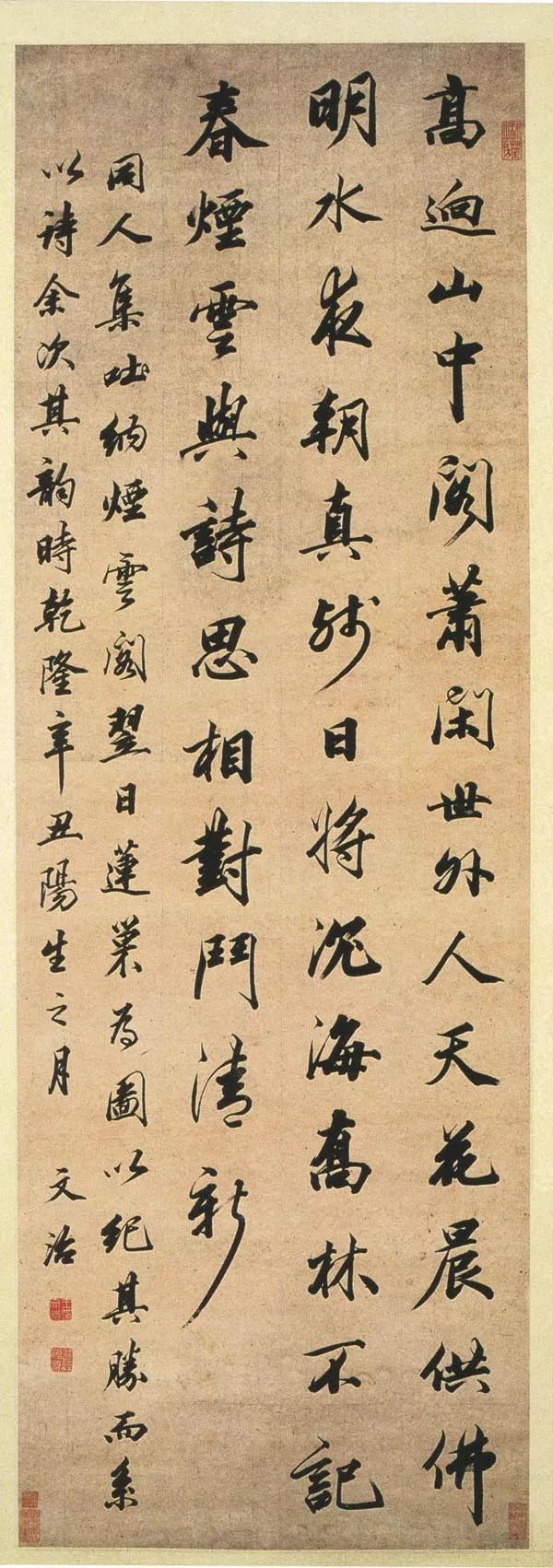In history, he was a juvenile calligraphy genius when he was 10 years old? Why do people spend a lot of money to buy his calligraphy works?
There are many calligraphy masters in history, but few of them became famous when they were teenagers. However, the young genius that Teacher Lin Lan wants to share with you today seems to be incomprehensible!
Wang Wenzhi (1730-1802) Yu Qing, numbered Dream Tower. A native of Dantu, Jiangsu (now Zhenjiang City, Jiangsu Province). At the age of twelve, he began to chant poems and write books. The poems have the style of the Tang people.
In the 35th year of Qianlong (1770), he was called "light ink to explore flowers" and "light ink Hanlin", which contrasted sharply with Liu Yongcheng, who likes to use thick ink. Its title is the same as that of Liu Yong. Have close contacts with Yao Nai.
Wang Wenzhi became famous in calligraphy when he was a teenager. In the twenty-first year of Qianlong (1756), Quan Kui and Zhou Huang went to Japan. The two envoys admired Wang Wenzhi's calligraphy fame and specially invited him to go with him. Wang Wenzhi readily agreed.
The Japanese are good at calligraphy and learned that Wang Wenzhi is a famous Chinese calligraphy master. At that time, North Koreans came to China and bought Wang Wenzhi's calligraphy with cake gold, and his calligraphy reputation spread overseas.
Many museums in Japan now treasure the original Wang Wenzhi. For example, the Tokyo National Museum, the neighboring museums of the Kyoto Fujii Masanori, the Okinawa Prefectural Museum, and the Oita Prefectural Museum all have collections of Wang Wenji's calligraphy.
Four years later, Wang Wenzhi entered the Beijing Palace Examination and got third in the First Class. After Zhongjinshi, Wang Wenzhi spent a few years in the Hanlin Academy and played very well with Ji Xiaolan. Wang Wenzhi was young and honest, and was often played by the eccentric Ji Xiaolan, leaving a lot of stories for the folks.
Later, Wang Wenzhi became the prefect of Lin'an, Yunnan. Today's work is written in this period. However, after working in Yunnan for a few years, he was dismissed due to oversight. Later, when the official was restored to his post, he had a temper: I love what I do, and I quit.
At this time, Yuan Mei resigned his adoptive mother in his prime, and Wang Wenzhi's move was also applauded by fellow Jiangsu villagers.
We all know that in addition to honoring the old lady, Yuan Mei is still accepting young disciples from the garden, so he is delicious and happy. After resigning from office, the honest Wang Wenzhi suddenly opened his mind and became arrogant.
He loves music, and teaches the rhythm of child servants himself. No matter where he goes, he must bring a singer with him to discuss music issues at any time.
And even though Wang Wenzhi is five big and three thick, with big eyes and thick beard, he prefers to wear makeup, and often frightens people with a fancy dress ball.
At that time, someone called Yuan Mei the "nine-tailed old fox", and Wang Wenzhi was also recorded in this way: a certain prefect used the magic as a fornication, decorated a female as a male servant, and a male as a female servant...
However, Wang Wenzhi didn't care about the secular vision, and continued to sing and play. Whenever guests come, he will sing and have fun. He made a lot of money by selling characters, and the money was spent on singers, but he wouldn't listen to others persuading him.
Wang Wenzhi has a habit. When the singing is loud, he is better than anyone else, but after the end of the song, he adjusts his breath and meditates and meditates silently. It seems to be extremely splendid, returning to a dull look.
Wang Wenzhi studied Zen in his middle age, received precepts in his later years, and reached no dharma title. Although he did not play as thoroughly as Li Shutong, he also pioneered the ethos from a talented man to an old monk.
One day in April of the seventh year of Jiaqing, 72-year-old Wang Wenzhi was sitting in his room. Sun Baihu, the wife of the wife, had quietly gone through a life full of colors.
Wang Wenzhi, a beginner in calligraphy, learned Dong Qichang and worked a lot in "The Preface of Jiwangshengjiao". He likes to use light ink and focuses on the experience of calligraphy Fengshen.
Qian Yong once commented that Wang Wenzhi "in middle-aged Zhang Jizhi copied the writings, and then went all the way lightly, just like Qiu Niangfu, with fine bones, good posture, but not dignified." However, Wang Wenzhi gave himself: "My poems and words are all Zen principles."
Frivolity is frivolity and Zen is frivolity. It is not easy to distinguish the two. Others say you are frivolous, but you are confident that you are Zen. This is the beauty of Wang Wenzhi.
There are many ways to live in life. Some people like to live in the eyes of others, while others are willing to follow their own temperaments and live what they want. I like Wang Wenzhi because he has lived out himself.
More works
Wang Wenzhi "The Scroll of Poems with a Picture of Xianghua in the Ming Mansion by Liu Songlan" 129×44.4cm on paper, Jiayin (1794), collection of Shanghai Museum
Contact us: linlanedu@gmail.com
Recommend you to read: When the beauty of calligraphy and the beauty of China met, a miracle happened in nature!




























No comments: